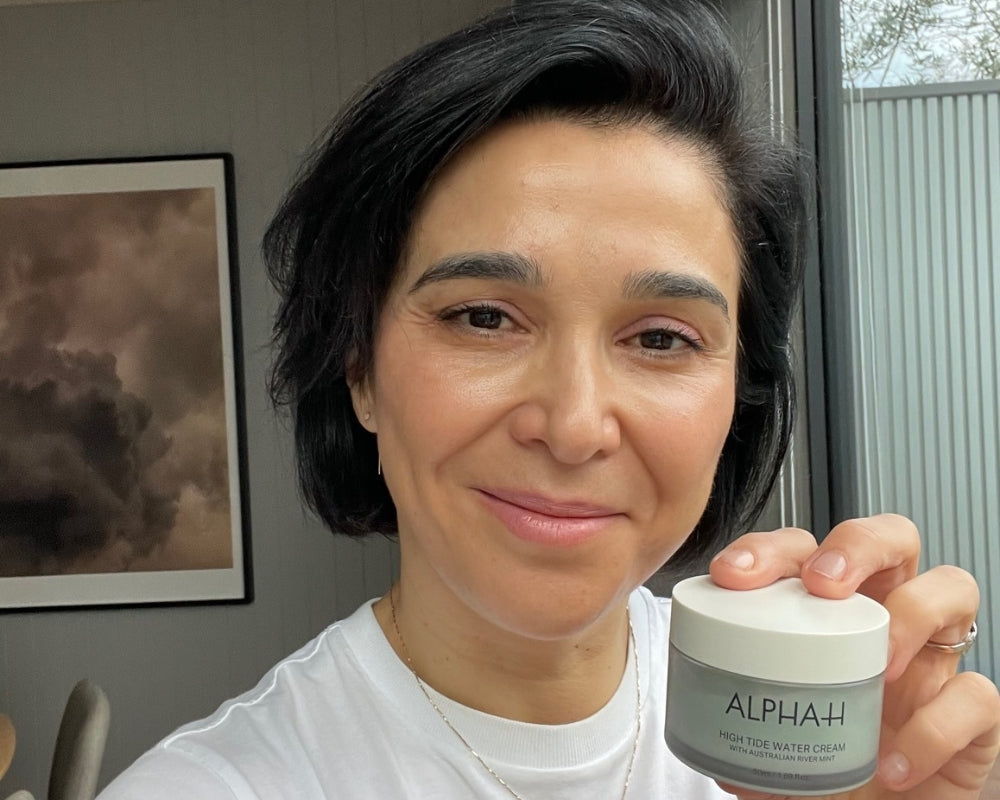A guide to skincare in your 40s.

What happens to the skin in your forties?
The skin goes through quite significant intrinsic changes in the forties as typically Estrogen, an influential hormone when it comes to the production of healthy collagen in the skin, begins to decline, altering the skin’s natural support system causing the formation of lines and wrinkles. These hormonal fluctuations related to menopause, can also contribute to additional skin conditions such as increased sensitivity, breakouts and hyperpigmentation.
Skin can also become quite sensitised, often due to years of over exfoliating which can leave the skin barrier compromised causing a sudden intolerance to skincare, including products you may have used successfully for many years.
Respecting the skin barrier
Choosing a pH balanced cleanser that respects the skin’s acid mantle and protective lipids will help to ensure that the skins protective barrier is intact, helping to maintain the skins’ ability to prevent water loss, a major contributor to dehydration. Choose the cleanser that’s perfect for your skin type and use twice daily.
Steps to building strong, resilient skin
Daily application of SPF is something you are hopefully already doing, however if not, it is never too late to start and if you need a little inspiration, remember that over 80% of visible aging of the skin is caused by sun exposure. Sunscreen works to protect the skin from damaging UV light which can wreak havoc on the skin’s supporting proteins, namely collagen. Read more about this here on the journal where we discuss photoaging
The forties are also the time to adopt good skincare habits that include the daily application of topically applied vitamins. Accelerated hyperpigmentation is common in the forties, particularly from the mid-forties onwards where cumulative UV exposure can manifest as uneven skin tone and what is commonly known as “age spots” on the face, neck, décolletage and backs of the hands. Vitamins contain potent antioxidants that can help to suppress the enzymes responsible for melanin production whilst simultaneously protect the skin from oxidative stress and further damage.
Choose Vitamin C Serum for your AM regime and Vitamin A Serum for evening. Hot tip – select all four vitamins instead and layer Vitamin E Serum over Vitamin C Serum each morning and alternate Vitamin A Serum and Vitamin B Serum in the evenings.
Accelerate skin turnover
Maturing skin does not shed excess dead skin as effectively, causing a build up of dull, lifeless cells that can cause the skin to appear less radiant. Regular exfoliation can help speed the skins natural turnover process revealing clearer brighter skin whilst also encouraging the production of the skins natural moisturising factors such as hyaluronic acid. Look for targeted treatment products such as Midnight Reboot Serum that combines Glycolic Acid with Vitamin A (Granactive Retinoid) a clinically-supported ingredient that targets both intrinsic and extrinsic ageing of the skin and apply alternate evenings.
Don’t underestimate your moisturiser
Skin can become dryer through the forties because of depleting natural lipids and essential fatty acids that help to keep the skin soft and supple. This occurs through external influence like environmental aggressors as well as the natural ageing process. The skin loses its ability to hold onto water as effectively resulting in increased trans-epidermal water loss. To help skin retain and build moisture, look to incorporate ingredients such as plant oils that are clinically proven to function as moisture-trapping lipids, which mimic the natural lipids in the skin when applied topically locking in hydration. We recommend Golden Haze Face Oil a versatile, multi-use oil suitable for all skin types.
Still unsure which products are right for you? Chat to one of our qualified Skin Specialists via Live Chat or Email, to find your bespoke routine tailored to your individual needs.
- Tags: all Skin Science
